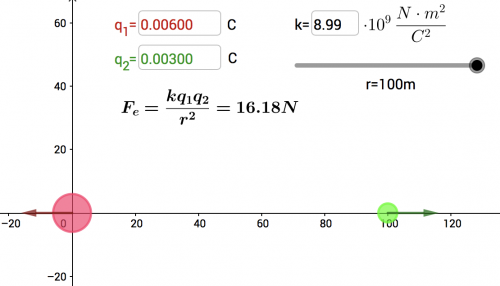Search the Community
Showing results for tags 'electrostatics'.
-
Magnets. They're pretty cool. If you connect a magnet to some thin cone, and run just the right currents through a wire somewhere in the mix, you can even get them to make weird noises. And that's what we call a speaker! But, for an class of Physics C students, that's probably fairly common knowledge, right? After all, I'm sure we've all seen the speaker contraption floating somewhere around the room. But wait - there's more! As a matter of fact, some speakers and headphones (and microphones for that matter) don't actually use magnets to make their funny sounds! "What?! How can you make something move with electricity without magnets?", you may ask. Well, I'll answer your question with a question: do you remember that whole unit we did about charges that don't move? The whole one that makes your hair stand up and lets you shock your little sibling when you're wearing slippers? Well, that's just about all you need to know, really. It's only a few steps: Take a stupidly thin film of something flexible, and make it nice and charged Place that thin sheet between two more thin, conducting sheets Use your audio signal to change the voltage between the two sheets Bam! The thin film moves with the sick beat from your mixtape! "But wait a second, I can't hear a thing! What gives?" Well, things get a bit complicated with that third step. You see, headphones have a little number called impedance attached to them. For the simplicity of this post, and so I don't have to actually do extensive research into it myself, we'll just say that higher impedance speakers/headphones are more difficult to adequately provide clean, powerful audio signals to than lower impedance ones. So anyway. Those little white earbuds you have in your pocket? Those probably have an impedance around 50 Ohms, depending on which brand they are, etc. Headphones driven by the method given above? Those have an impedance upwards of 150000 Ohms! That's quite a bit higher! So, in order to properly use these headphones and speakers, you'll also need to get a hold of a really powerful amplifier. Then, you'll be able to hear the sweet sound of electrons being lazy and not liking one-another. So, that's about it. Magnets: they're pretty cool, but they're not the only cool kid in town.
-
- magnets
- electrostatics
-
(and 1 more)
Tagged with:
-
-
- 1
-

-
- coulombs law
- electrostatic force
-
(and 3 more)
Tagged with:
-
View File SimuLAB: Coulomb's Law APlusPhysics Simulation Lab handout to accompany the APlusPhysics Coulomb's Law mini-lab simulation activity. Submitter FizziksGuy Submitted 11/29/2017 Category Electricity
-
- coulombs law
- electrostatic force
-
(and 3 more)
Tagged with:
-
-
-
- Interactive Physics
- Coulombs Law
-
(and 2 more)
Tagged with:
-
Version 1
37 downloads
An introductory electrostatics lab in which students utilize electroscopes, Vernier charge sensors, and the standard rubber and glass rods (with fur, wool, etc.) to explore electric charges and their basic properties. Equipment: Vernier Charge Sensor Aluminum Foil Clip Leads Metal Can Glass Jar Amber rod Glass rod Fur cloth Wool cloth Electroscope Scotch tape Plastic straw Others?Free-
- 1
-

-
- charge
- charge sensor
-
(and 2 more)
Tagged with:
Terms of Use
The pages of APlusPhysics.com, Physics in Action podcasts, and other online media at this site are made available as a service to physics students, instructors, and others. Their use is encouraged and is free of charge. Teachers who wish to use materials either in a classroom demonstration format or as part of an interactive activity/lesson are granted permission (and encouraged) to do so. Linking to information on this site is allowed and encouraged, but content from APlusPhysics may not be made available elsewhere on the Internet without the author's written permission.
Copyright Notice
APlusPhysics.com, Silly Beagle Productions and Physics In Action materials are copyright protected and the author restricts their use to online usage through a live internet connection. Any downloading of files to other storage devices (hard drives, web servers, school servers, CDs, etc.) with the exception of Physics In Action podcast episodes is prohibited. The use of images, text and animations in other projects (including non-profit endeavors) is also prohibited. Requests for permission to use such material on other projects may be submitted in writing to info@aplusphysics.com. Licensing of the content of APlusPhysics.com for other uses may be considered in the future.




